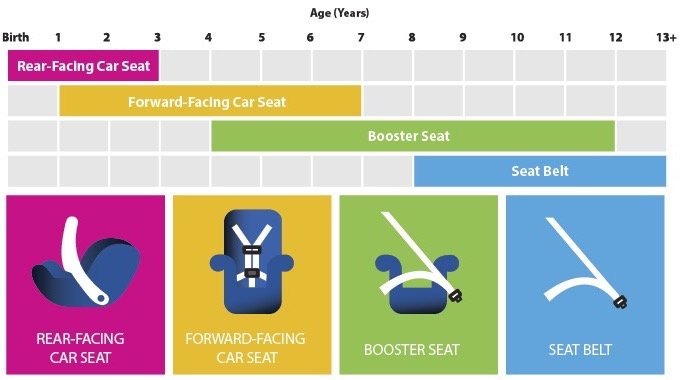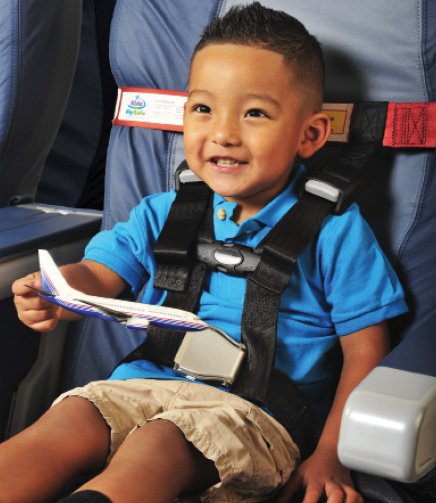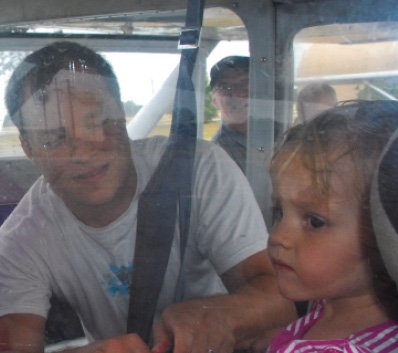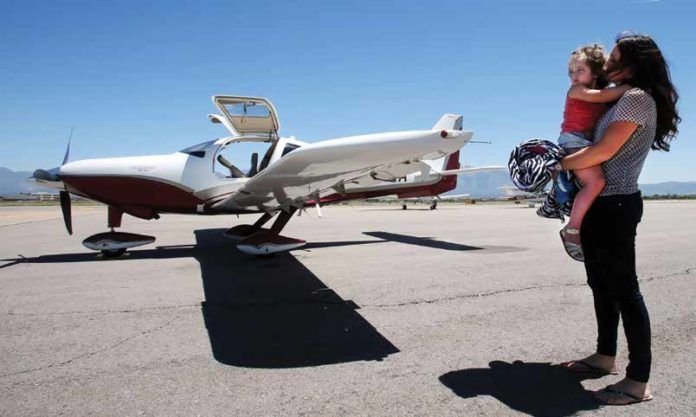Squirreled away in a shoe box somewhere, I have a 3 x 5 print (remember those?) of my then-infant son bundled into the back seat of a Cessna 172. It was his first flight, and I’m proud to have been the pilot to initiate him, even though he doesn’t remember it. I don’t have a formal record, but both he and my slightly younger daughter have since logged enough time as my passengers to easily meet the minimum total time required for a private certificate. But before that first flight, his mother and I researched what steps we could take to make it successful.
Among our many concerns were an appropriate seat and its location in the cabin, potential damage to his hearing from cockpit noise and what effect, if any, the change in pressure with altitude would have. He was much too young to clear his own ears, and infant-sized active noise-reduction products hadn’t yet been invented. The car seat we used was approved for aircraft and it fit, so putting him and it in the Skyhawk’s back seat kept his arms and legs away from anything important.
Flying young children in a personal airplane can be that simple, but it’s likely to be infinitely more complicated. The concerns we had then and since when flying with our kids in personal aircraft break down into four main areas: security, noise, physical comfort and, as they got older, entertainment. Let’s explore some of those challenges and possible solutions.
Security
It was a while before he and my daughter were big enough to not need a car seat and could sit up front where the fun stuff is. Like all parents, we went through several car seats as they grew, in various sizes and configurations, including booster seats. It turns out that choosing a car seat for the airplane was the easiest part, because federally approved car seats sold in the U.S. since 1981 are automagically FAA-approved for aircraft. The sidebar on the opposite page has some recommendations.
You should go refresh your understanding of FAR 91.107, “Use of safety belts, shoulder harnesses, and child restraint systems.” Pay particular attention to FAR 91.107(a)(3) and its discussion of child restraint systems (CRS), where you’ll find the exact labeling required to be on the car seat for it to be legal on roads and in the air.
Other CRS may be legal for aircraft use if, for example, they were manufactured under United Nations standards or approved by the FAA via a type certificate or supplemental type certificate. There’s also an FAA technical standard order (TSO-C100C, dated April 2012) which defines an aviation child safety device (ACSD). There’s only one we’re aware of that’s been approved in this fashion, the AMSAFE CARES product (see the sidebar on page 6).
Once the choice of CRS is made, you have to decide where in the cabin to put it, and your child. First, we strongly suggest not putting the infant and child seat adjacent to, in front of or otherwise in a position where they can block an exit from the cabin. Nothing good can come from that. Second, we also strongly suggest not mounting the child seat where it or its occupant can interfere with the aircraft’s operation. In a typical personal airplane, this means the CRS should be mounted in a rear seat. An additional consideration is that a CRS usually is designed to be mounted in a forward-facing seat, so club-seating arrangements may limit flexibility.
In a tandem or side-by-side two-seater, we don’t think it’s a good idea to carry an infant in a car seat. That’s because of our third suggestion: A responsible person should be seated next to the infant. Ideally, this is a parent, but also could be a sibling or other family member. The reasons should be obvious, but the potential for the child to divert the pilot’s attention at a critical time simply is too great.
Yes, there are exceptions to these “rules” and the pilot in command is the ultimate authority. But this really is a two-person operation, at least until the child is old enough to communicate, release a seat belt and egress the airplane unassisted.
Noise
As I mentioned, when I first flew my son, noise-canceling headsets for cockpits were not available. (Years later, the only ill effect seems to be that he doesn’t hear me when I ask him to take out the trash.) At the time, I was using a lightweight headset that inserted into one ear and a foam earplug in the other when I flew. It was less than optimal, but better than nothing.
His mother and I cobbled together something similar for his first flight using cut-down foam ear plugs and a cold-weather head covering with straps we secured under his chin after adding some additional material to help deaden the noise. It was probably ineffective, but it helped us feel better about the whole thing.
These days, there’s a decent selection of youth-size aviation headsets available with active noise reduction, or ANR. They supposedly do the job with larger children and tweens, but we’re not aware of any aviation-specific headset—with or without ANR—designed to work with an infant-size head to reduce the noise of a piston-powered airplane’s cabin.
That said, the infant or small child doesn’t need to be on the aircraft’s intercom system, especially when there’s a responsible attendant. There’s a wide variety of consumer-grade, noise-canceling headphones on the market that don’t do anything except block ambient noise, and many are designed for infants and small children. They sometimes are referred to as earmuffs, and likely won’t be as effective or durable than an aviation-specific ANR headset. At the same time, they likely won’t be as expensive, either.
Physical Comfort
Ensuring the comfort of an infant whose communication skills remain undeveloped is a challenge all parents experience. The rear seats of a noisy, bumpy, non-air-conditioned and unpressurized airplane is a special case. Once the security and noise questions were addressed, we were most concerned with the reduced atmospheric pressure of climbing to altitude. Blocked sinus passages and an inability to clear them can be very painful for an adult—imagine what it could be like for an infant or small child who can’t yet communicate effectively.
An obvious way to address the effects of changing atmospheric pressure on a small child is to not climb very high. A typical airliner at cruise altitude is pressurized to something between 6000-8000 feet msl, and that became our ceiling when flying with an infant. Obviously, if your home already is at 6000-8000 feet, he or she will be acclimated to that pressure, and may be fine at, say, 10,000 or 12,000 feet. But for those of us who live closer to sea level, taking an infant to those altitudes probably isn’t wise. Same for oxygen altitudes—do you really want to be using O2 in the teens while your infant is breathing at ambient pressure? And good luck convincing the child to accept a cannula or even an appropriate-sized mask.
Teaching an infant to clear his or her ears with pressure changes probably isn’t a good plan, either, so we settled on a better one: Give the child a bottle to suck on when climbing or descending. (Of course, it helps if the infant is hungry, so we managed the feeding schedule appropriately.) The action will help equalize sinus pressures and, especially if your rate of climb or descent isn’t too great, you should be fine. For older children, chewing gum can work, too, or you can teach them the Valsava maneuver, which involves pinching the nostrils closed, closing the mouth and attempting to exhale. This will pressurize the sinuses and ears, and, hopefully, equalize pressures.
In many ways, it’s easier to accommodate an infant’s physical comfort in a personal airplane than it is an older child: they wear diapers and probably won’t critique your landings. As my kids got older, some additional guidelines came into play. One of them was to limit a flight’s duration.
With adequate fuel, I don’t mind a five- or six-hour jaunt halfway across the country, but I usually do those solo. Of course, Job One upon landing is finding a bathroom. With children in an airplane—just as in a car—you’ll need to plan potty breaks. You also may want to limit their fluid intake while en route.
Meanwhile, the cabin-heat systems of most piston singles leave something to be desired, especially in the winter and especially in the back seats. As when in a car or outside in the elements, it’s a good idea to layer a child’s clothing with easily removed garments. Be sure the extremities are warm.
Finally, children may not be accomplished passengers. They may need an unscheduled potty break or a Sic-Sac, even in calm skies. Stay flexible in your planning and be sure to identify suitable divert airports along your route before takeoff.
Entertainment
Infants seem quite capable of entertaining themselves, but older children are easily bored when sitting in one place for a few hours. As most parents know, they easily can make themselves a nuisance when they want. How you keep them entertained in the back of a personal airplane is much easier these days than when my children were youngsters.
Coloring books can be ideal in the daytime, since they don’t need batteries or a quiet environment to occupy your child. At night, you may need to illuminate the materials somehow, and doing so may interfere with your night vision. Plan accordingly.
Video and audio entertainment can be problematic, thanks also to light levels at night, but primarily because of the noise levels in the typical personal airplane and the playback device’s potential incompatibility with an aircraft’s intercom/audio system. If it’s not important for the child to be on the intercom—i.e., the child has an attendant—a good solution might be the non-aviation ANR headphones mentioned earlier. Earbuds under a pair of them might be better yet.
The proliferation of tablets and smart phones means it’s likely that’s what you’ll use to keep your child entertained. The same considerations when you use one as an electronic flight bag—mounting, power, audio and lack of an internet connection—apply to the gadgets keeping a child entertained.
Caveats
If your child has special needs, much of the foregoing may be useless. On the other hand, it’s likely you’re not the first to face the challenge of accommodating such needs, whether you’re in a Boeing, a Cessna or a Toyota. Do some research, talk to parents in similar situations and, above all, be ready to abandon the idea of flying your child until he or she is older or is physically and emotionally capable.
Another thing to consider is discussing your plans with the child’s pediatrician, who may have an important perspective on your child’s ability to be aboard an unpressurized aircraft, for instance, or even an airliner for that matter. Ensure that any condition confronting your child won’t be exacerbated or prevent a successful introduction to flying.
Another consideration is weight and balance. First of all, don’t forget to include the child seat in your calculations. Same for the diaper bag and other support equipment. By seating a responsible party—e.g., spouse or older sibling—and the child in the back seats, you might be changing your routines and improperly loading the aircraft.
You also may need to consider the child and CRS in your pre-takeoff and pre-landing briefings. Refer to FAR 91.107 and what it says about securing seat belts and harnesses for landing and takeoff. Yes, children under two can be held by an adult, but that’s silly. While en route, it’s not uncommon to unseat the child for diaper changing or just to stretch the legs. Everybody should be strapped in for landing by the top of the descent.
Finally, a word about egress. We’ve covered where not to place a CRS, but deciding who aboard will be responsible for the child in the event of an emergency also should be worked out before takeoff. Part of that decision involves whether to remove the child from the CRS or remove the child and CRS as a single item. In my experience, it’s easier to snap open a single buckle restraining the child than it is to remove a mounted CRS with a child in it. The right decision depends on a variety of factors, but just ensure you’ve thought through what should happen, and in what sequence. If you’re flying over water, you also need a plan for the child. At least add an appropriate-sized PFD to your equipment.
Flying with infants and young children will complicate your pre-flight planning and in-flight decision-making. But it’s worth the trouble, and one result is another category of great memories.

One catch with the CARES is that it’s not approved for automobiles. Another is that it’s rated for children between 22 and 44 lbs., and up to 40 inches tall. And if you want to use it aboard an airliner, you may have to convince everyone from the gate agent to the captain that it’s safe and FAA-approved.

The FAA has at least two Advisory Circulars that may be of interest. One, AC 91-62A, “Use Of Child Seats In Aircraft,” dated October 1992, primarily applies to private operations, though many of the same rules apply to FAR Parts 121 and 135. Additionally, AC 120-87C, “Use Of Child Restraint Systems On Aircraft,” dated September 2015, updates terminology and references guidance not available in 1992.
Your aircraft’s documentation may have information on child restraint systems, required equipment, briefing cards or operating limitations regarding infants and small children. For example, GAMA-format documentation since 1998 may carry the statement, “The child should not be held or share a seat belt with another person.”

Jeb Burnside is this magazine’s editor-in-chief. He’s an airline transport pilot who owns a Beechcraft Debonair, plus the expensive half of an Aeronca L-16B/7CCM Champ.




